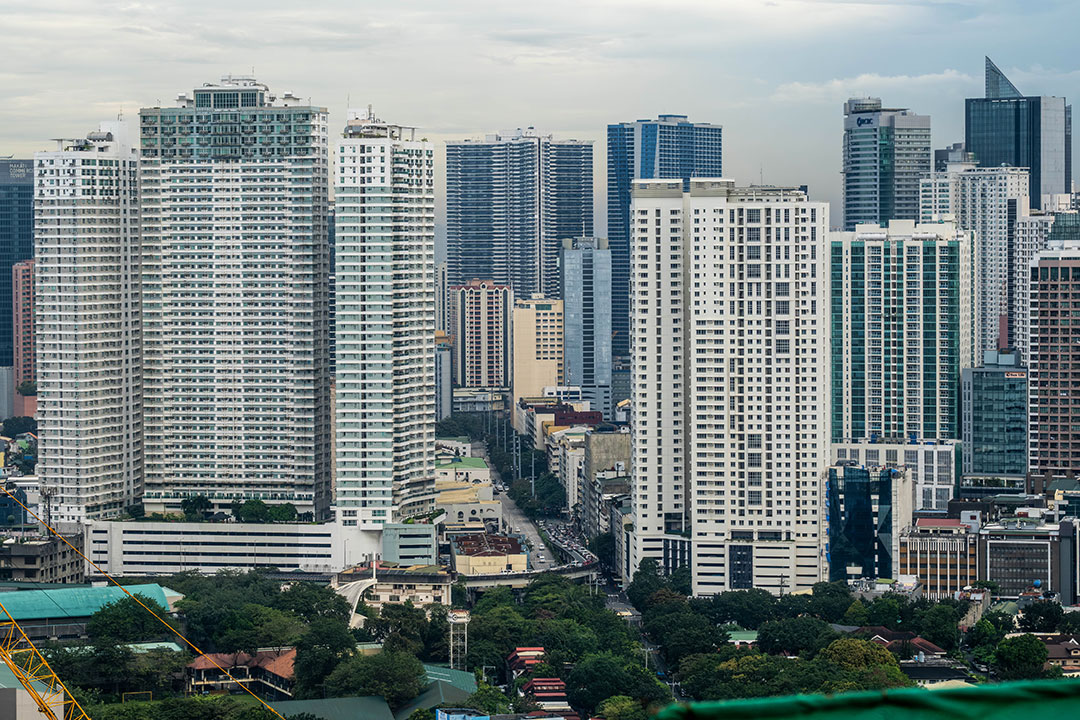Mid-income condos to drive property market recovery — Colliers

By Beatriz Marie D. Cruz, Reporter
RESIDENTIAL VACANCY in Metro Manila is expected to decline steadily by 2027, driven by renewed demand for middle-income condominium, according to real estate consultancy firm Colliers Philippines.
In its Third Quarter Property Market Report, Colliers expects residential vacancy rates to reach 26.5% this year, before falling to 26% in 2026 and to 24.9% in 2027.
“What stands out is that the mid-income residential segment continues to perform well,” Colliers Philippines Director and Head of Research Joey Roi H. Bondoc said at a briefing on Wednesday.
“Hopefully, we see a greater take-up for the affordable, lower mid-income, and upper mid-income condominium units by the end of this year, the fourth quarter, and towards 2026,” he added.
In the third quarter, residential take-up surged by 108% to 5,900 units from 2,800 units in the second quarter. This was also the highest in nine quarters or since the 8,500 units in the second quarter of 2023.
“When you look at the take-up for the first nine months of 2025, more than 90% of these projects are coming from the affordable to mid-income segment,” Mr. Bondoc said, noting that these units are typically priced between P2.5 million and P12 million.
Backout rates, where buyers cancel their purchases, also fell by 26% to 2,700 units in the third quarter from 3,600 units in the second quarter. This marked two consecutive quarters of a decline in backouts.
The improved residential vacancy rate can also be attributed to the lower completions in Metro Manila, Mr. Bondoc said.
“We call it developers turning off the supply tap and really recalibrating and just catering to what the market organically requires at this point,” he noted.
Colliers data showed that residential completions between 2026 and 2028 will average just 3,600 units, an 87% drop from the 13,000 units completed on average from 2017 to 2019.
“If you have limited supply right now, then you have a stable or even growing demand,” Mr. Bondoc said. “Intersect those two factors, we’re projecting a much lower vacancy moving forward.”
Colliers noted that residential vacancy rate is expected to inch up to 26.5% by end-2025 from 25% as of the third quarter due to additional units in the Bay Area, Alabang, and Makati Central Business District scheduled for turnover by yearend.
By submarket, the Bay Area is projected to have the highest residential vacancy at 58.6% by end-2025, followed by Fort Bonifacio (20.2%) and Makati central business district (13.2%).
As of the third quarter, about 30,400 units remain unsold in Metro Manila.
Of the total, 47% of unsold inventory in Metro Manila comes from the mid-income segments, falling from the 59% share of mid-income condominiums to unsold inventory in 2024.
Colliers added that 35% of unsold units come from the affordable segment, which is valued at P2.5 million to P3.19 million, 35% from lower mid-income (P3.2 million to P6.99 million), and 12% from the upper mid-income segment (P7 million to P11.99 million).
Mr. Bondoc noted that promos for ready-for-occupancy (RFO) units have been attracting buyers, thus improving residential take-up.
“This only indicates that the ready-for-occupancy promos being offered by developers right now, which continue to abound, have really been doing wonders for the residential sector here in Metro Manila,” he said.
In the previous quarters, Colliers said developers have offered attractive promos for RFO units, including discounts of up to 60% for spot cash payment, free parking, and rent-to-own promos.
Developers must be creative in their RFO promos to sustain buyer demand, Mr. Bondoc said.



